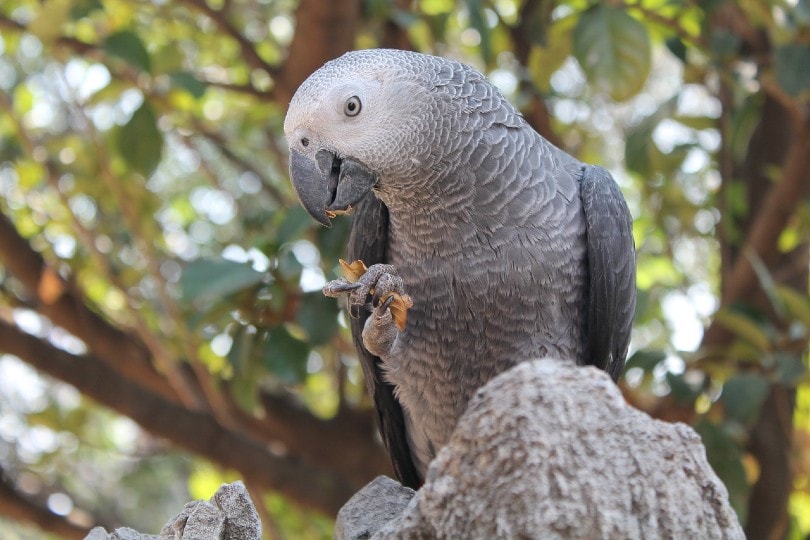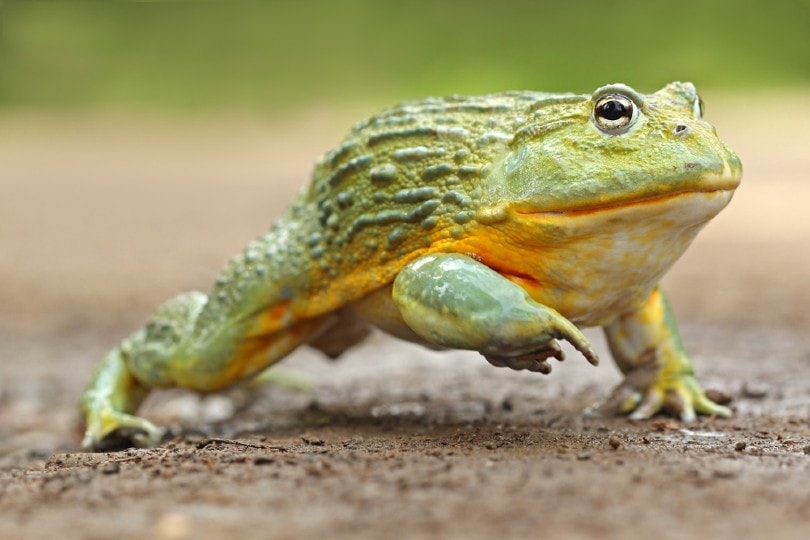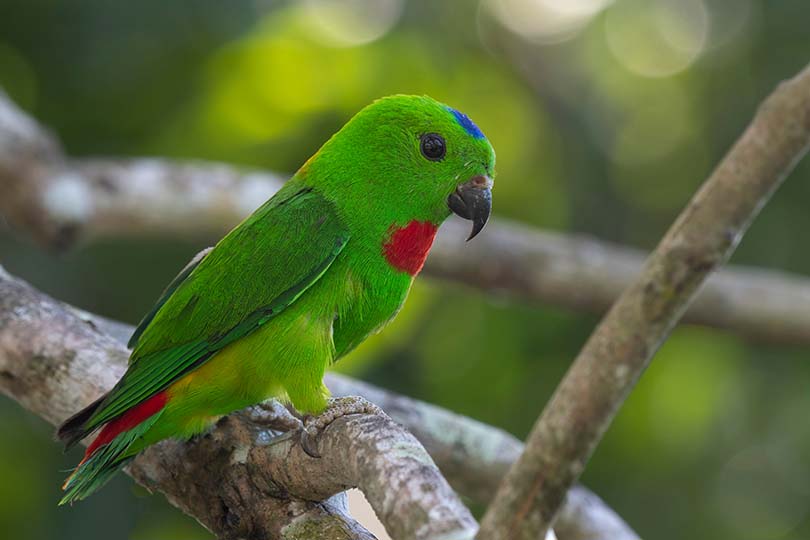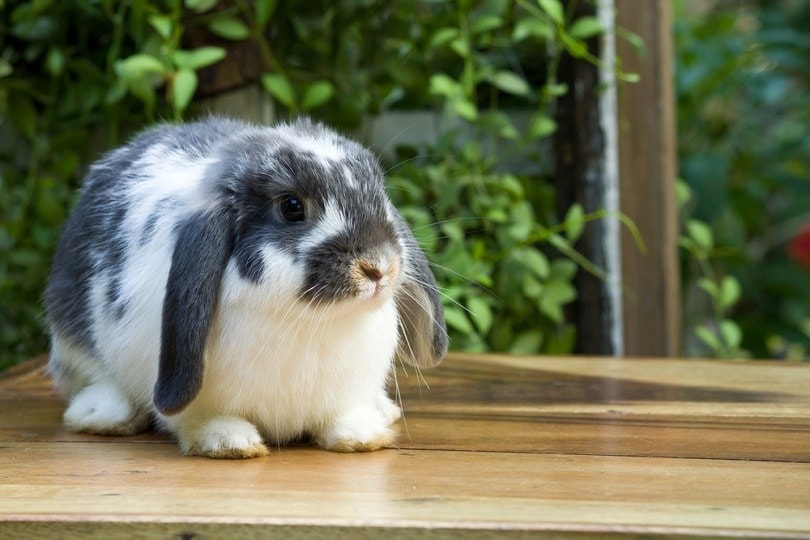Click to Skip Ahead
The “Einstein of the Bird World” is the African grey parrot’s nickname. They’re intelligent, friendly, and energetic birds. Do you have what it takes to care for the long-lived species? Don’t worry; this guide will give you all the information you need to decide if the African grey parrot is the best companion bird for your needs and lifestyle.
Let’s dive in!

African Grey Parrot Species Overview
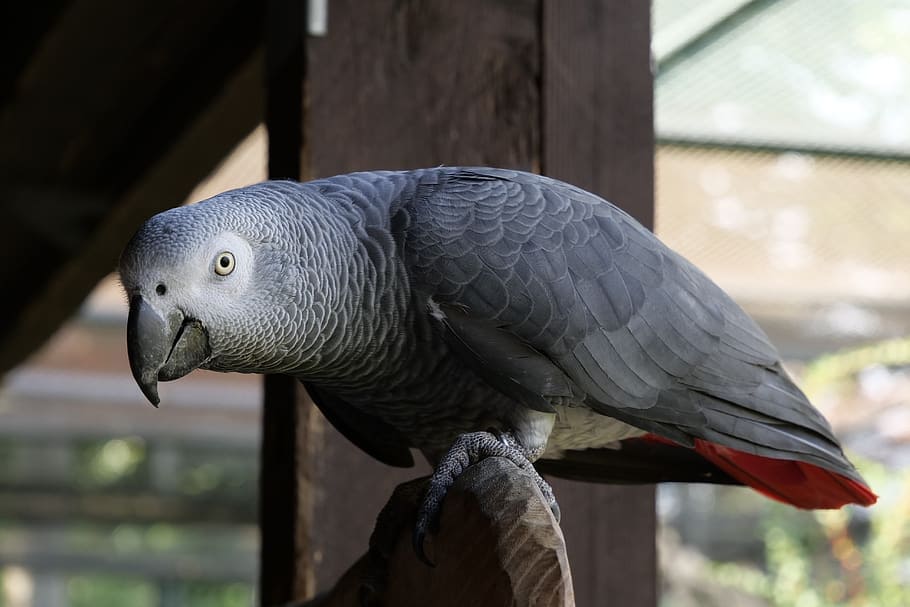
| Common Names: | African grey parrot, grey parrot, Congo grey parrot |
| Scientific Name: | Psittacus erithacus |
| Adult Size: | 400 grams; 13 inches |
| Life Expectancy: | 23 years in the wild, 40–60 years as pets |
Origin and History
In the wild, the African grey parrot lives mainly in the equatorial forests of central and western Africa, including Gabon, Cameroon, Congo, and the Democratic Republic of Congo. The first description of this species was made in 1758 by the Swedish naturalist Carl von Linné. Over the centuries, the high popularity of the African grey has contributed to the decline of its numbers in the wild.
The destruction of its natural habitat by deforestation has exacerbated this trend. This is why the species is listed in Appendix I of the Convention on International Trade in Endangered Species of Wild Fauna and Flora (CITES).
Also, according to the International Union for Conservation of Nature Red List of Threatened Species (IUCN), the African grey parrot is now an endangered species due to its international trade and ongoing habitat loss. This means it is expected to experience a rapid decline over the next four decades.
It is one of the most popular pet birds in Europe, the United States, and the Middle East due to its longevity and unrivaled ability to mimic human speech. However, most legal exports come from Central African countries, such as Cameroon, Congo, and Gabon.
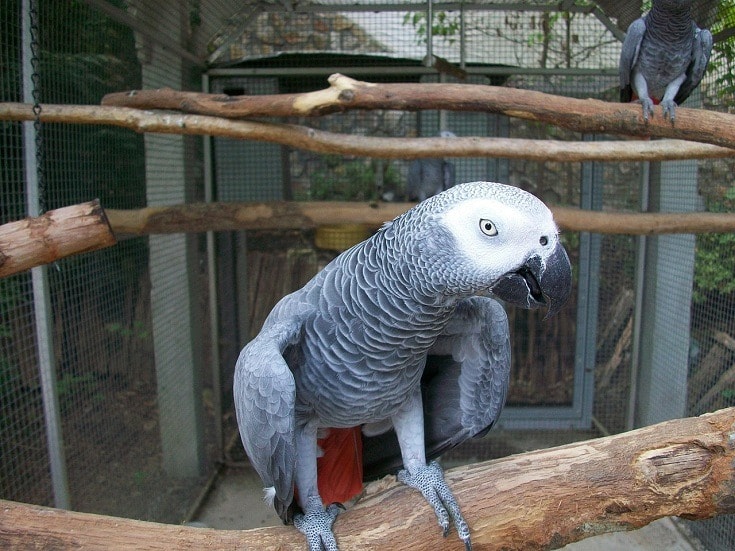

Temperament
The African grey parrot is a lovely, curious, fascinating, and highly intelligent bird. Indeed, this medium-sized bird has an extraordinary ability to learn words and noises. So don’t be surprised if your bird starts to mimic the ringing of the phone, the bark of a dog, or even the swear words you say without realizing it! The African grey knows how to place sounds and words in their precise context, not only by imitation. Thus, their intelligence is recognized as similar to that of a 6-year-old child.
However, the African grey parrot craves attention due to its emotional intelligence. Be aware that your bird is likely to become very attached to you, much more than any other breed of bird. So, if you are away from your home for long hours every day and come back too tired to spend quality time with your bird, it would be wiser to adopt a more low-maintenance species.
Thus, the African grey requires a lot of care and attention, especially regarding its socialization and training. A stimulating environment and daily interactions are essential. Take the time to educate and interact with your bird on a daily basis, and it will reward you by surprising you day after day!
- Highly intelligent
- Can mimic the human voice and sounds better than any other parrot species
- Affectionate and caring of their human parents
- Prone to behavioral problems if left alone too much
Speech & Vocalizations
Grey parrots mimic noises heard in their surroundings and use them relentlessly. As pets, African grey parrots have been shown to exhibit communicative skills, which means that they use human language correctly and in a manner appropriate to their social situation.
If you want your parrot to speak, you must talk to it regularly and use the same words. This will allow your pet to familiarize itself with your vocabulary and to repeat your words without difficulty. Always be patient, gentle, and attentive. Don’t force it or rush it.
Your bird will talk to you when it feels confident and decides it’s the right time.

African Grey Parrot Colors and Markings
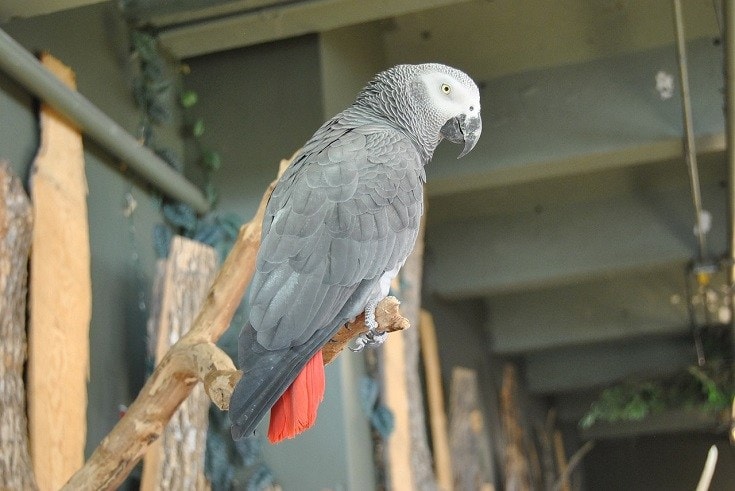
While the African grey parrot may look like a monochrome bird, its plumage features more nuance and subtlety than you might think! The plumage is not a solid gray. Instead, the feathers on its head and wings are a darker gray, while the feathers on its undercoat are a lighter, more silvery gray. The head feathers are also streaked and tinged with white.
There are a few other splashes of color, including yellow eyes, a black bill, and bright-red tail feathers. Additionally, mutations can occasionally make parrots red, blue, brown, or albino.
Some breeders have tried to make African grey parrots redder. Their experiments were successful: some were born with all red or pink plumage instead of gray. Moreover, these specimens are sold at astronomical prices because they are so rare!
Also, gray mutations occur naturally in the wild, such as the Blue Ino (all white), the Incomplete Ino (only light pigmentation), and the Blue varietals.

Caring for the African Grey Parrot
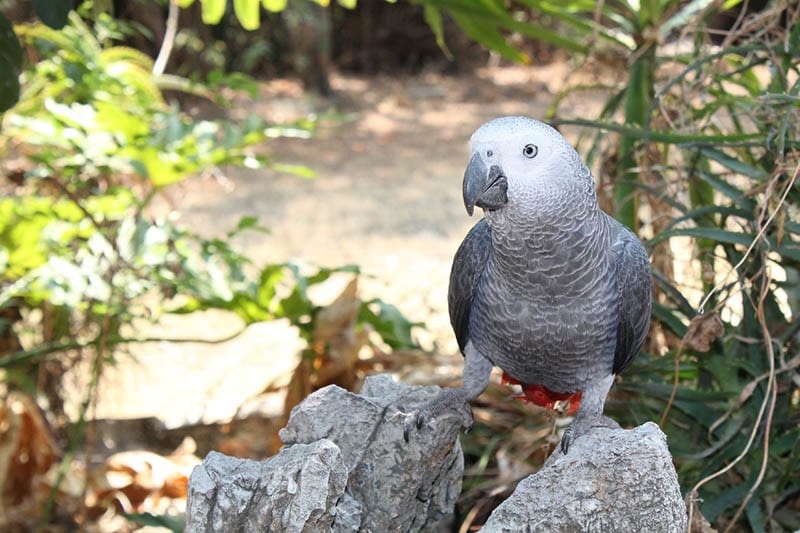
Housing and Enrichment Toys
Your bird’s cage should be ready before your parrot arrives. Place it in a pleasant and lively space, such as a living room, because the African grey is very friendly and enjoys participating in family life. However, avoid a drafty location close to a window. Also, avoid the kitchen because of the smoke and the bedrooms, which may be too quiet.
The cage should be large enough for the parrot to spread its wings and fly a little. It should be made of solid material with a complex opening system because your parrot can quickly learn how to open it!
Install small toys and several perches to keep your parrot entertained. Wood perches are ideal because African greys often rub their beaks on them, and it’s best to avoid plastic perches.
Grooming
In their natural habitat, grey parrots like to groom each other. If you only have one individual as a pet, they will need your help! Once a week, you can provide a small basin of lukewarm water and watch your bird happily take a bath.
Common Health Problems
The African grey parrot demands special attention regarding its respiratory tracts, which are quite fragile. The most frequent diseases observed in this species are:
- Psittacine beak
- Proventricular Dilatation Disease
- Fatty Liver Disease
Also, another disease that requires immediate care is hypocalcemia. It is difficult for some African greys to maintain adequate blood calcium levels. Signs of this condition are sometimes subtle: the parrot is unusually awkward, slips off its perch at night, or is shaken by small tremors. If the hypocalcemia is not corrected at this stage, the bird’s health may deteriorate over time and lead to seizures. Prompt veterinary attention is crucial since the bird’s life may be in danger.
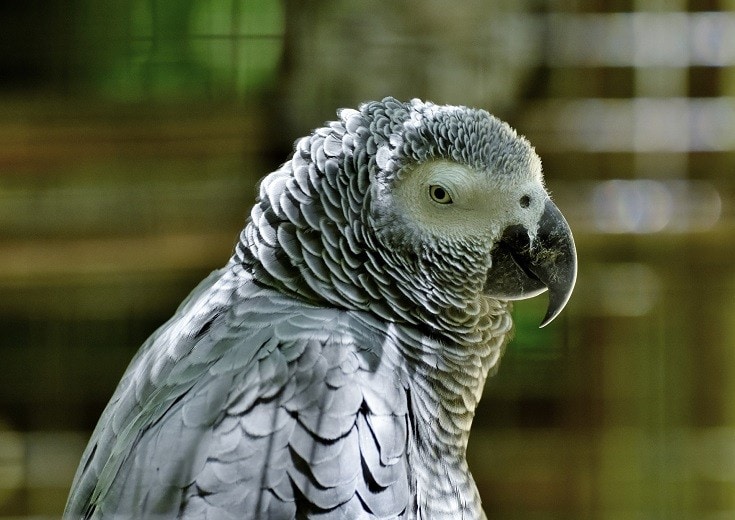
Diet and Nutrition
African grey parrots are mainly frugivorous: they enjoy a diet of fruits, nuts, bird pellets, and some seeds. You can offer your pet bird fresh fruits and veggies, such as:
Your African grey parrot needs quality, well-balanced food. Choose mixtures made explicitly for Psittacidae, available from breeders and specialist stores. Some commercial seed mixes may suffice temporarily, but they are often too high in fat. Your bird will likely sort the seeds it prefers and can become overweight and have nutritional deficiencies over time.
You can supplement the diet with a mineral stone, which is a source of calcium and minerals essential for the well-being of your bird. Also, make sure to provide fresh water daily. Then, once a week, pour a vitamin supplement in the water to overcome any risk of deficiencies and preserve the beauty of its plumage.
Exercise
Your African grey parrot must spread its wings daily to maintain good health. Thus, your companion should be allowed to spend at least 1 to 2 hours a day outside of the enclosure, but only if you provide access to a safe room. If not, your bird’s cage should be large enough to allow it to fly at will; an aviary is an excellent option to consider. In addition, your parrot’s cage should contain many toys to stimulate it mentally and physically and prevent it from getting bored.

Where to Adopt or Buy an African Grey Parrot
Adopting or purchasing an African grey parrot is a decision to consider carefully. It will take a lot of commitment and time on your part, especially for its long lifespan, and because it will become a rather loud member of your family.
Buying a grey parrot in specialist bird shops or from a breeder is ideal if you have one nearby. Unfortunately, you should know that it is not uncommon for parrots to see at least 11 owners in their lifetime.
Therefore, you should really consider adopting an African grey parrot since there are so many that have been abandoned in shelters. Bestfriends.org and other reputable websites are an excellent place to start.
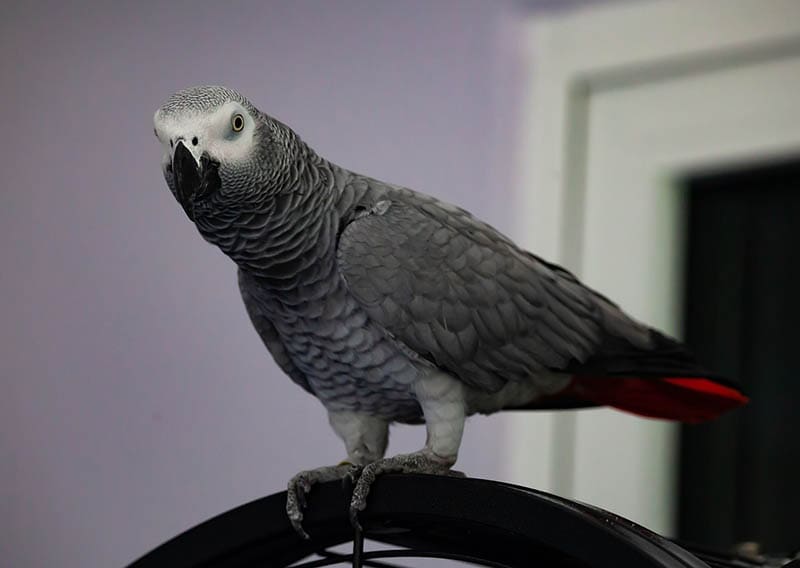

Conclusion
The African grey parrot is a fascinating companion bird. But, on the other hand, their remarkable intelligence, empathy, and (very) long life expectancy are double-edged swords. They require a lot of attention and interaction from their owners and won’t be happy or healthy if you don’t provide the proper care and attention. You must carefully weigh the pros and cons before adopting such a bird. But, if you are well prepared and informed, you will have the chance to spend several years of companionship with this charismatic and endearing parrot!
- Related Read: How Much Does an African Grey Parrot Cost?
Featured Image Credit: Daniel Albany, Pixabay
